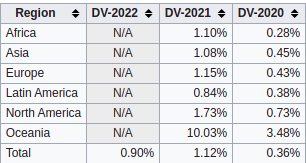There is a lot of impact to be had working in the US, what with US organisations having easier access to capital than most anywhere else in the world.
If you're looking to join a US-based organisation, you'll need a US work visa. The common employer-sponsored visas are, roughly,
- O-1 'extraordinary talent' visa, which requires you to check three of these eight boxes,
- Specific-national visas, like for Canadians, Australians, Chileans and Singaporeans,
- H-1B visas, which have laxer requirements but are subject to a 1-in-3-ish lottery for for-profit orgs. It's uncapped for research-related non-profits!
If you're not one of the listed nationals and you don't check the O-1 boxes, the H-1B is the next best option. The lottery happens only once a year, at the end of March, and if you win it's another six months before you can start work.
This means that if you want to work for a US organisation and you're happy to try your luck, it's a good idea to start interviewing at those organisations around about now.
Be aware that small, nimble organisations can sign you up for the lottery within a week of making an employment offer, but larger organisations or ones with less experience with immigration might take much longer.
(This is written on the basis of only my own experience of the US immigration system; you'll want to do a lot more research while evaluating your own options. The exactness of the H-1B timing came as a surprise to me, and maybe this'll help other folk)
Thanks to Vaidehi for corrections!





Furthermore, the process by which a nonprofit is designated a "research nonprofit" is kind of arcane (for example, it's independent of how the IRS classifies the org in their 501(c)(3) designation). If the org you're applying to hasn't successfully sponsored cap-exempt H-1Bs in the past, expect additional delays while their lawyers argue with USCIS about it.